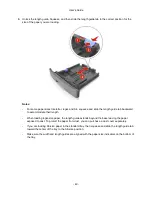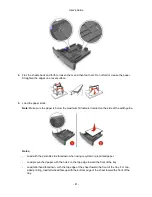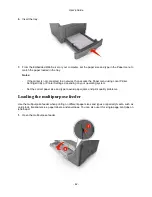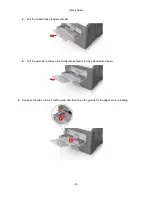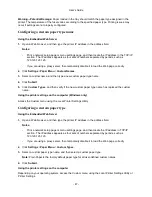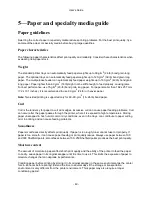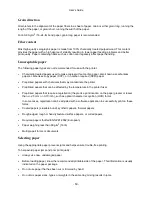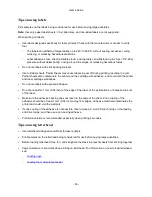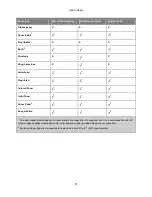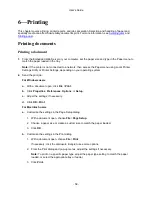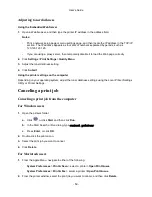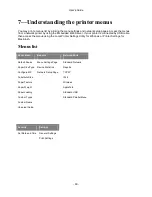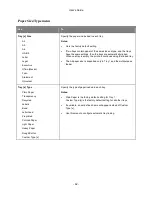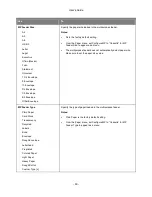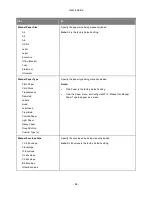
User's Guide
- 52 -
When printing on card stock:
•
Make sure the Paper Type is Card Stock.
•
Select the appropriate Paper Texture setting.
•
Be aware that preprinting, perforation, and creasing may significantly affect the print quality and
cause jams or other paper handling problems.
•
Check with the manufacturer or vendor to ensure that the card stock can withstand temperatures up
to 240°C (464°F) without releasing hazardous emissions.
•
Do not use preprinted card stock manufactured with chemicals that may contaminate the printer.
Preprinting introduces semi-liquid and volatile components into the printer.
•
Use grain short card stock when possible.
Tips on using envelopes
Print samples on the envelopes being considered for use before buying large quantities.
•
Use envelopes designed specifically for laser printers. Check with the manufacturer or vendor to
ensure that the envelopes can withstand temperatures up to 230°C (446°F) without sealing, wrinkling,
curling excessively, or releasing hazardous emissions.
•
For best performance, use envelopes made from 90-g/m
2
(24-lb bond) paper or 25% cotton. All-
cotton envelopes must not exceed 70-g/m
2
(20-lb bond) weight.
•
Use only new envelopes from undamaged packages.
•
To optimize performance and minimize jams, do not use envelopes that:
- Have excessive curl or twist
- Are stuck together or damaged in any way
- Have windows, holes, perforations, cutouts, or embossing
- Have metal clasps, string ties, or folding bars
- Have an interlocking design
- Have postage stamps attached
- Have any exposed adhesive when the flap is in the sealed or closed position
- Have bent corners
- Have rough, cockle, or laid finishes
•
Adjust the width guides to fit the width of the envelopes.
Note:
A combination of high humidity (over 60%) and high printing temperature may wrinkle or seal
envelopes.



